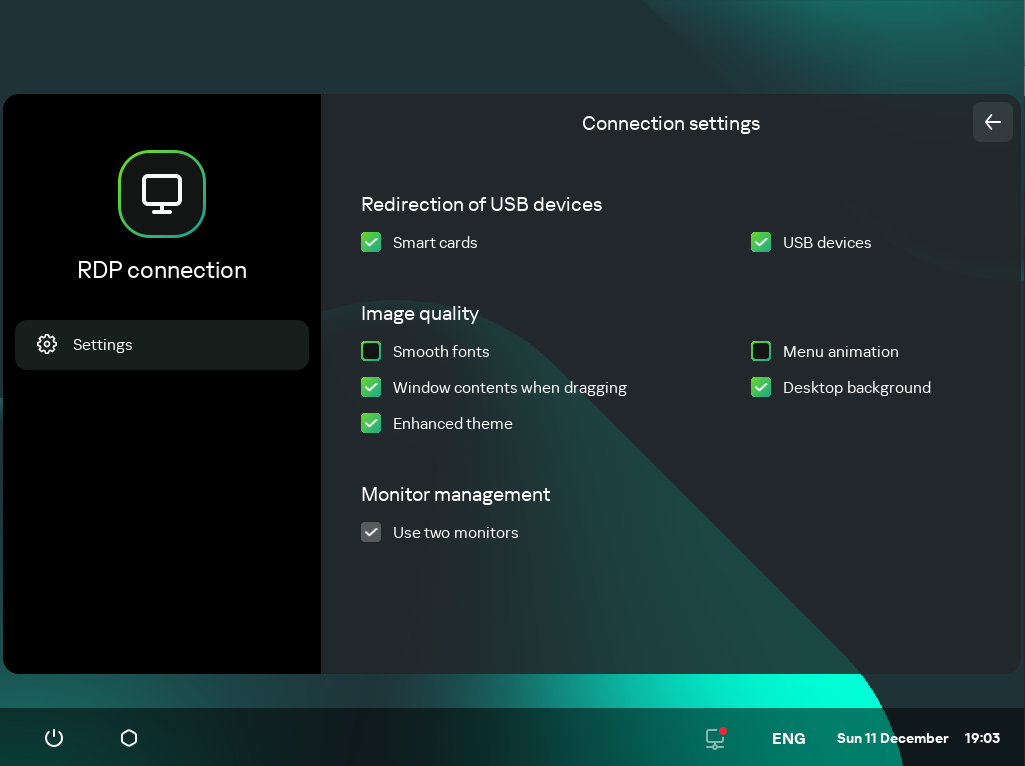Configuring RDP connection settings
Kaspersky Thin Client lets you configure redirection of USB devices to a remote desktop, and configure settings for connecting to a remote desktop via RDP.
To correctly redirect USB devices to a remote desktop using the Windows 10 operating system, you must enable Remote Desktop Services and allow redirection of Plug and Play devices in the settings of Remote Desktop Services. For Microsoft Windows Server 2016 and Microsoft Windows Server 2019 operating systems, you must also allow a remote connection using Remote Desktop Services and allow remote management rules to be set for user sessions in Remote Desktop Services. Redirection of smart cards, flash drives, and tokens to a remote desktop running the Microsoft Windows 7 operating system is not supported.
To configure settings for connecting to a remote desktop via RDP:
- In the main window of Kaspersky Thin Client, click the RDP button.
- In the remote desktop connection window that opens, click Settings in the left part of the window.
This opens a window in which you can configure settings for connecting to a remote desktop (see the figure below).

Window for configuring settings for connecting to a remote desktop via RDP
- In the Redirection of USB devices settings block, select the check boxes next to the devices connected to Kaspersky Thin Client via USB that you need to pass through to the remote desktop:
- The USB devices check box enables or disables redirection of USB devices.
- The Smart cards check box enables or disables redirection of smart cards and tokens.
- In the Image quality block, select the check boxes next to the remote desktop graphics settings that you need to use:
- Smooth fonts
- Menu animation
- Desktop background
- Window contents when dragging
- Enhanced theme
Enabling remote desktop display settings may affect the speed of Kaspersky Thin Client operations.
- If two monitors are installed at your workstation and you want a remote desktop image to be displayed on both monitors, select the Use two monitors check box in the Monitor management block. If necessary, you can configure the layout of monitors.
- Click the back arrow in the upper-right corner of the window to return to the remote desktop connection window.